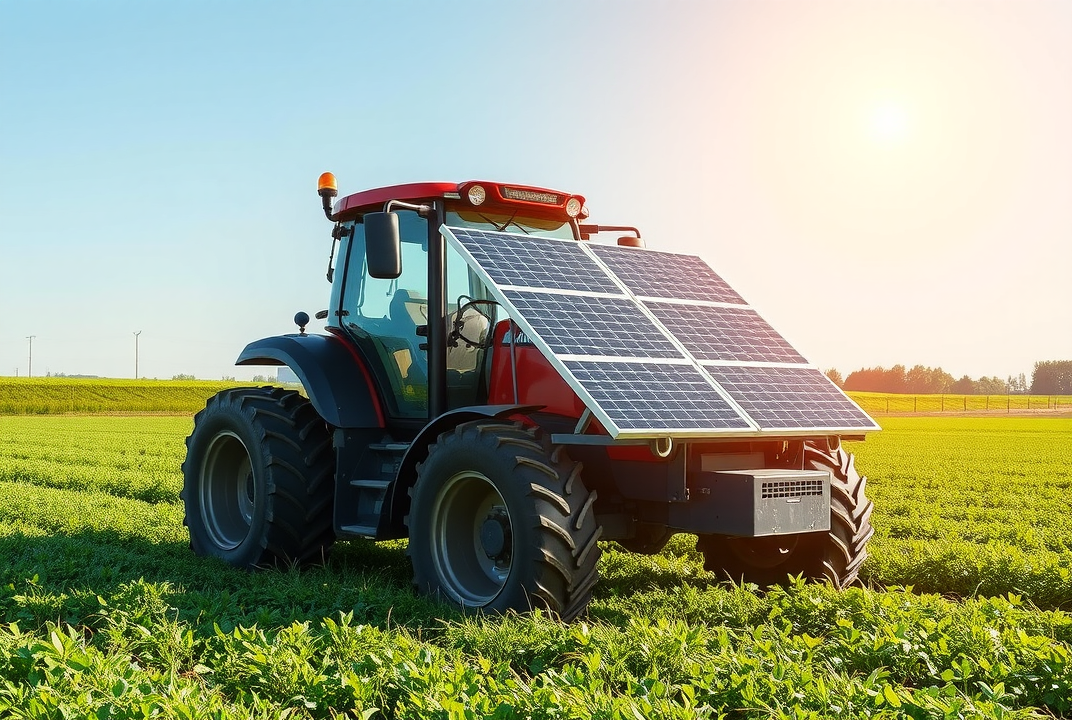Solar-Powered Farm Equipment: Sustainable Innovations in Agriculture

Introduction
Modern agriculture is undergoing a transformation with the integration of renewable energy solutions, particularly solar power. Could solar-powered farm equipment be the key to a more sustainable future? This article reviews the advancements in solar technology for agriculture, evaluating its impact on farming efficiency and sustainability.
Understanding Solar-Powered Farm Equipment
Solar-powered farm equipment utilizes photovoltaic (PV) panels to convert sunlight into electricity, powering various agricultural machines and tools. This technology offers farmers a cost-effective and environmentally friendly alternative to conventional farming methods.
Benefits of Solar-Powered Equipment
-
Cost Efficiency: Solar technology can significantly reduce energy expenses as it relies on sunlight, an abundant and free resource. Farmers can decrease their dependence on fossil fuels and mitigate fluctuating energy costs.
-
Environmental Impact: By reducing reliance on fossil fuels, solar-powered equipment lowers greenhouse gas emissions. This contributes to a cleaner environment and supports efforts toward sustainable agriculture.
-
Energy Independence: Solar power provides farms the ability to produce their own electricity, leading to greater energy independence. This is especially beneficial in remote areas where access to grid electricity is limited.
-
Maintenance and Durability: With fewer moving parts, solar-powered systems generally require less maintenance compared to traditional fuel-powered machines. This translates to long-term savings on repairs and replacements.
Types of Solar-Powered Farm Equipment
-
Solar Tractors: These are tractors equipped with PV panels that provide all or part of the power needed for operation.
-
Irrigation Systems: Solar pumps can be used to pump water from sources to fields, making irrigation more sustainable.
-
Electric Fencing: Solar energy powers electric fences, which is crucial for livestock management.
-
Harvesters and Planters: Some harvesters and planters are now integrated with solar panels to assist in the cultivation process.
Challenges Faced by Solar Technologies in Farming
While solar-powered farm equipment offers numerous advantages, it also faces challenges.
-
Initial Investment: The upfront cost of switching to solar can be high, which may deter some farmers.
-
Weather Dependency: The efficiency of solar panels is affected by weather conditions. In regions with limited sunlight during certain seasons, alternative solutions may be necessary.
-
Technological Limitations: Some solar-powered equipment may not yet match the power output of traditional equipment, restricting usage in some areas.
Case Study: Solar Adoption in Remote Farms
In a study conducted in rural India, farms transitioning to solar-powered irrigation systems saw a 60% reduction in operational costs. This was achieved without compromising the quality and volume of production. Farmers reported increased energy independence and a significant decrease in fuel expenses.
Industry Insights: The Future of Solar Farming
Experts in the agricultural technology field foresee massive growth in solar farming adoption. As technology advances, it is anticipated that more equipment will be designed to harness solar energy efficiently.
Quote from Expert:
"The transition to solar-powered farm equipment is essential for environmentally sustainable agriculture. It represents a future where energy dependency and carbon footprints are minimized." — Jane Smith, Agricultural Scientist
Conclusion
Solar-powered farm equipment offers a path to sustainability in agriculture. Despite some challenges, the long-term benefits for cost savings, environmental impact, and energy independence make it a promising innovation. Farmers willing to invest in this technology today may find themselves at the forefront of a sustainable farming revolution.
Call to Action
Explore solar options for your farm and consider investing in solar technology to future-proof your agricultural operations. By doing so, you can play a part in reducing the environmental impact of farming while improving efficiency and cutting costs.